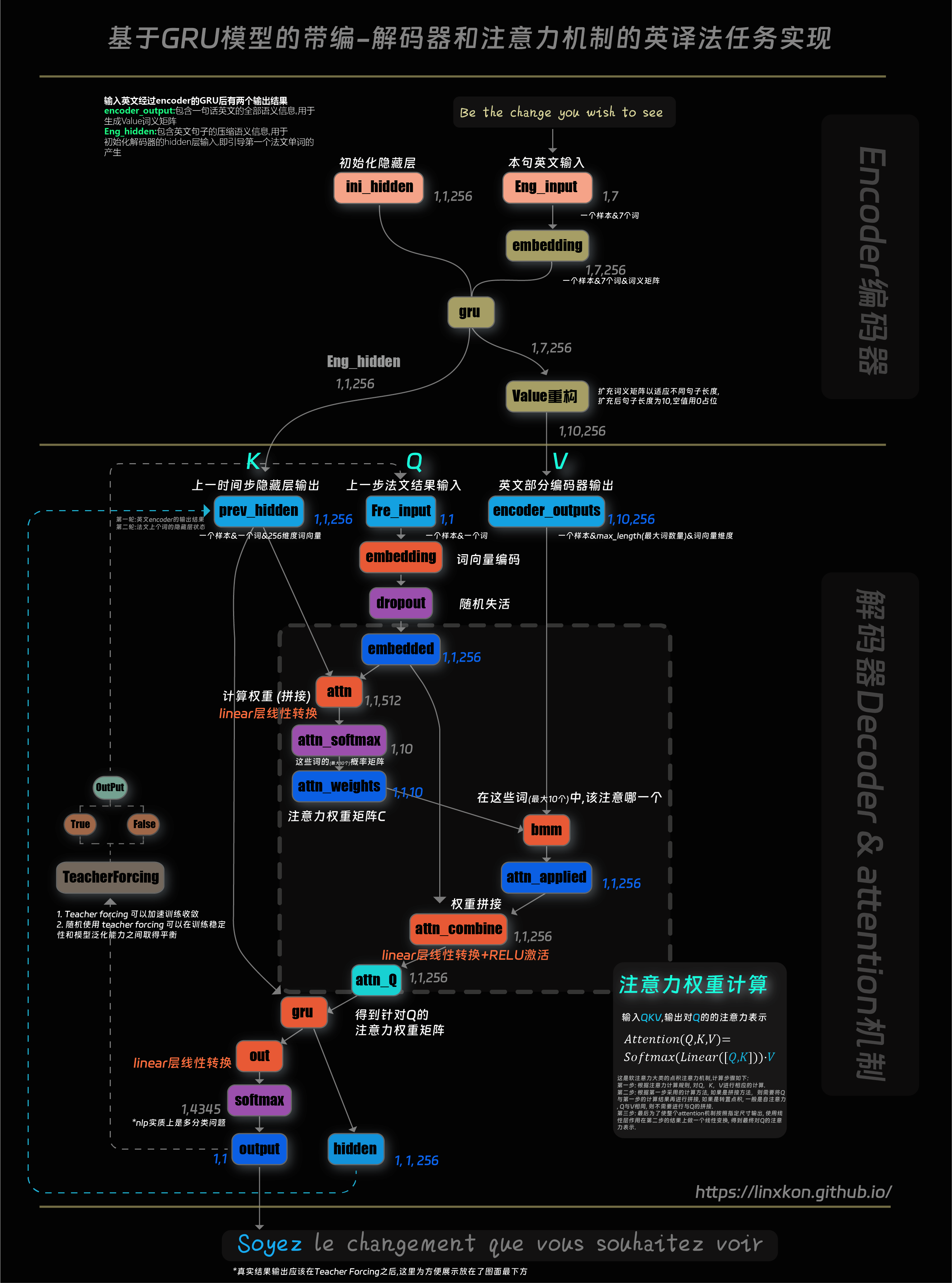1
2
3
4
5
6
7
8
9
10
11
12
13
14
15
16
17
18
19
20
21
22
23
24
25
26
27
28
29
30
31
32
33
34
35
36
37
38
39
40
41
42
43
44
45
46
47
48
49
50
51
|
PATH1 = './gpumodel/my_encoderrnn.pth'
PATH2 = './gpumodel/my_attndecoderrnn.pth'
def dm_test_Seq2Seq_Evaluate():
mypairsdataset = MyPairsDataset(my_pairs)
mydataloader = DataLoader(dataset=mypairsdataset, batch_size=1, shuffle=True)
input_size = english_word_n
hidden_size = 256
my_encoderrnn = EncoderRNN(input_size, hidden_size)
my_encoderrnn.load_state_dict(torch.load(PATH1, map_location=lambda storage, loc: storage), False)
print('my_encoderrnn模型结构--->', my_encoderrnn)
input_size = french_word_n
hidden_size = 256
my_attndecoderrnn = AttnDecoderRNN(input_size, hidden_size)
my_attndecoderrnn.load_state_dict(torch.load(PATH2, map_location=lambda storage, loc: storage), False)
print('my_decoderrnn模型结构--->', my_attndecoderrnn)
my_samplepairs = [
['i m impressed with your french .', 'je suis impressionne par votre francais .'],
['i m more than a friend .', 'je suis plus qu une amie .'],
['she is beautiful like her mother .', 'elle est belle comme sa mere .']
]
print('my_samplepairs--->', len(my_samplepairs))
for index, pair in enumerate(my_samplepairs):
x = pair[0]
y = pair[1]
tmpx = [english_word2index[word] for word in x.split(' ')]
tmpx.append(EOS_token)
tensor_x = torch.tensor(tmpx, dtype=torch.long, device=device).view(1, -1)
decoded_words, attentions = Seq2Seq_Evaluate(tensor_x, my_encoderrnn, my_attndecoderrnn)
output_sentence = ' '.join(decoded_words)
print('\n')
print('>', x)
print('=', y)
print('<', output_sentence)
|
